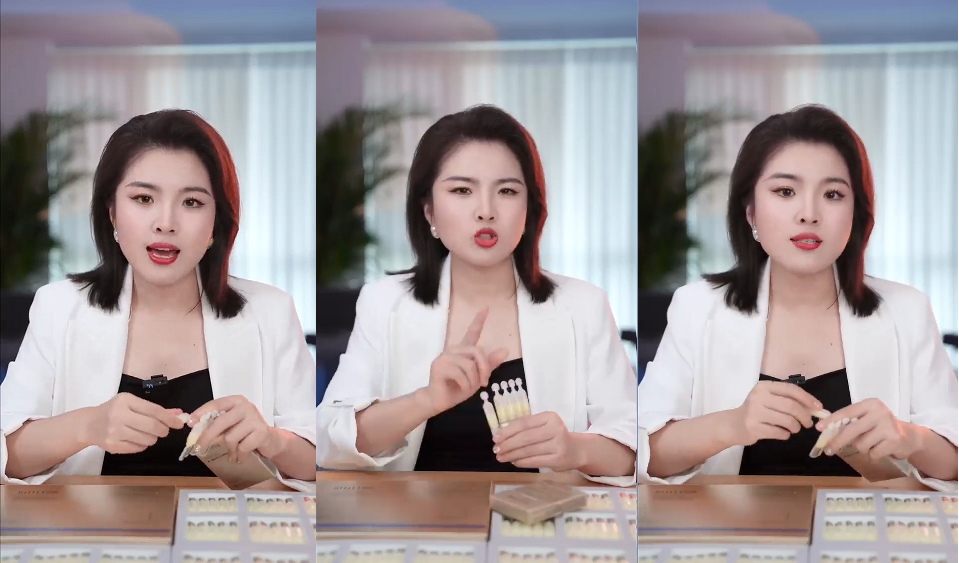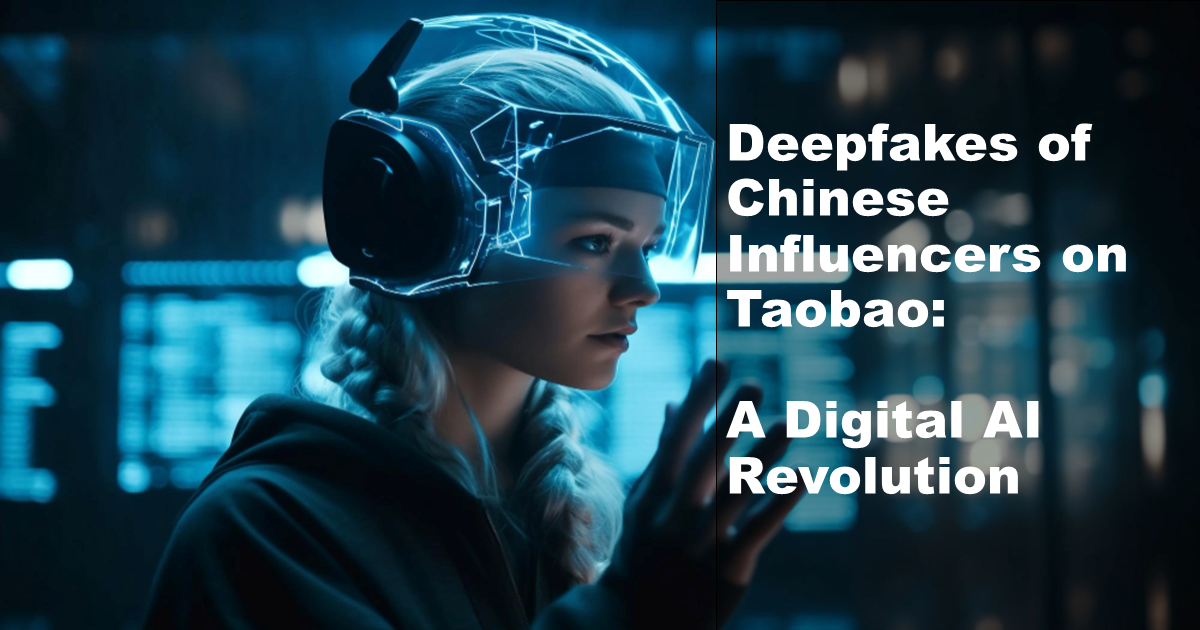The Rise of Deepfakes in the World of Chinese Influencers
It’s no secret that the world of social media and influencer marketing has taken the internet by storm. From fashion bloggers to fitness gurus, influencers have become a powerful force in shaping consumer trends and driving sales. But what happens when technology takes this phenomenon to a whole new level?
Enter deep-fakes, the latest digital revolution that is sweeping across China’s e-commerce giant, Taobao. Deep fakes are hyper-realistic videos or images that use artificial intelligence to superimpose one person’s face onto another’s body, creating a seamless and often indistinguishable result. And it seems that Chinese influencers are at the forefront of this groundbreaking trend.
Table of Contents
The Power of Deepfakes on Taobao
Taobao, China’s largest online marketplace, is known for its vast array of products and its ability to connect consumers with sellers. However, in recent years, the platform has also become a hub for influencer marketing, with thousands of influencers promoting products to their loyal followers.
With the rise of deep fakes, these influencers are now able to take their marketing efforts to a whole new level. By using deepfake technology, they can create videos and images that appear to feature themselves using or endorsing various products. This not only adds a personal touch to their promotions but also enhances the overall user experience.
But why are deep fakes so effective on Taobao? One reason is that they allow influencers to showcase products in a more engaging and relatable way. By seamlessly integrating their own faces into the content, they create a sense of authenticity and trust, making their followers more likely to make a purchase.
What Are Deepfakes?
Its, a portmanteau of “deep learning” and “fake,” are computer-generated, hyper-realistic videos, audio recordings, or images created using artificial intelligence (AI). This cutting-edge technology leverages deep neural networks to manipulate or superimpose the likeness of one person onto another, often with stunning accuracy.
Key Characteristics of Deepfakes
- Realistic Visuals: It excel in replicating facial expressions, voice modulation, and mannerisms, making it challenging to distinguish from genuine content.
- AI-Powered Algorithms: Advanced machine learning algorithms analyze vast datasets to create convincing imitations of individuals.
- Manipulative Potential: This can be used for various purposes, both creative and malicious, raising ethical and legal concerns.
The Ethical Dilemma
While deep fakes may seem like a game-changer in the world of influencer marketing, they also raise ethical concerns. The use of this technology blurs the line between reality and fiction, making it difficult for consumers to distinguish between genuine content and manipulated ones.

Moreover, the creation and distribution of deep-fakes can have serious consequences for both influencers and consumers. If an influencer is caught using deep fakes without disclosing it to their audience, it can damage their reputation and credibility. Similarly, consumers may feel deceived and betrayed if they discover that the content they trusted was not authentic.
Applications of Deepfakes
Deep fakes offer a broad spectrum of applications, some of which are truly revolutionary while others can be disconcerting. Here are some notable uses:
- Entertainment: In the film industry, it have been used to resurrect deceased actors or create uncanny resemblances for storytelling purposes.
- Political Satire: Deepfake technology has given rise to political satire, where politicians’ faces and voices are superimposed into comical scenarios.
- Identity Theft Prevention: Companies are exploring the use of it to enhance security by creating authentication systems that are nearly impossible to breach.
- Artistic Expression: It provide artists with a new canvas for creative expression, enabling unique and immersive experiences.
How to Make a Deepfake Video
- Visit Deepfake website
- Step 1. Upload your source video & target videos to be replicated.
- Step 2. Sit and relax as the AI Learn and analyze your video, and then it will render your output video.
- Now download or preview your newly created deepfake video.
- You can now watch the video, or you can reuse your model for later.
- The lower the loss values are, the higher the quality will be. (They should be less than 0.02)
- Make payment as each video cost you as low as $4 / hour with an Average Cost and Time for a Basic Deepfake (10,000 Iterations) – $20 & High-Quality Deepfake (50,000 Iterations) – $80
The Future of Deep fakes on Taobao
Despite the ethical concerns, it seems that deep-fakes are here to stay on Taobao. As technology continues to advance, we can expect even more realistic and sophisticated deep-fake content to emerge. This poses both challenges and opportunities for influencers and consumers alike.
On one hand, deep fakes can revolutionize the way products are promoted and marketed, allowing influencers to create highly engaging and personalized content. On the other hand, the prevalence of deep fakes may erode trust and authenticity in the influencer industry.
As consumers, it is crucial for us to stay informed and vigilant. We should always be aware that not everything we see online is real. By being critical and discerning, we can navigate the world of deep fakes and make informed decisions.
Deepfakes in the News
Recent advancements in deep fake & AI technology have ignited discussions on its potential consequences and security risks. In the world of cybersecurity, it is vital to stay informed about these developments.
In Conclusion
As we navigate the world of deepfakes, it becomes evident that their influence extends beyond simple entertainment or digital trickery. The ethical, legal, and creative implications of this technology are vast and complex. While it may be a tool for both good and ill, it is essential to foster a better understanding of their capabilities and limitations.
In summary, deep fakes are a double-edged sword, and as the technology continues to evolve, society must adapt to this new reality. By staying informed, exercising critical thinking, and engaging in responsible use, we can harness the power of deep fakes while safeguarding against their potential misuse.
The rise of deep fakes on Taobao is a fascinating development in the world of influencer marketing. While they offer exciting possibilities for influencers and brands, they also raise important ethical considerations. As technology continues to evolve, it is essential for both influencers and consumers to navigate this digital revolution responsibly. So if you are looking for an Mobile app development company to develop your own deepfake AI avatar platform or any AI product idea, contact us today.
Frequently Asked Questions
How Can I Spot a Deepfake?
Detecting a deep fake can be challenging, but irregularities in facial expressions, lip-syncing, and background inconsistencies can be red flags.
Is Deepfake Regulation Necessary?
Many experts advocate for regulatory frameworks to govern the use of deepfake technology, particularly in sensitive domains like politics and journalism.
What Are the Legal Implications of Deepfakes?
Deep fakes raise questions about privacy, defamation, and intellectual property rights, which are still evolving in legal contexts.
Are There Tools to counter Deepfakes?
Yes, various software tools and digital forensic techniques are being developed to detect and counter deepfake content.

